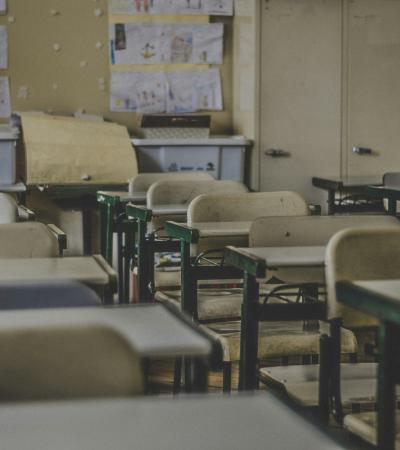Truth & Reconciliation in Our Community brought together numerous community members to speak their truths around the historical and current treatment of Canada’s Indigenous Peoples, specifically the Nation on whose territory the town of Smithers stands, with a view to moving forward together as a community.
Advanced Planning
Goals
This program sought to strengthen our community’s social fabric through education about the local Indigenous Peoples’ experience here, in the past and present. We hoped this event would encourage reflection, deepen understanding and inspire people to develop their own personal plan towards reconciliation. Another goal was for the library to connect with our community’s Indigenous Peoples and organizations to build relationships in order to learn how to better meet their needs.
Planning and steps
Event development took a year and a half and involved securing grant funding for planning wages and honoraria; research; building relationships with potential speakers and organizations; and refining the vision of the event.
We wanted an event driven by the partners/speakers, so we began with a loose framework and brainstormed as a group. It was challenging to decide which ideas to include and which should be separate events. Finally, the library had to pare down suggestions and lead in order to move this event forward.
Challenges
Potential speakers were reluctant to respond until we slowly got to know each other. Some speakers changed their mind shortly before the event, or could not confirm which members of their group would be present.
Marketing
To market the events, local and regional media were contacted via email, social media and dropping off posters. Our many event partners also shared news of the event with their staff and organizational members through posters, Twitter and Facebook. We created extra-large posters and hung them around town.
All of the media outlets — various radio stations, regional TV and the local newspaper — ran stories on the upcoming event, which reached a broad audience. Watch news coverage of the event.
Budgeting
The largest cost associated with this event was wages for our programs and events (P&E) coordinator, Melissa Sawatsky. The necessary relationship-building with new partners, involving many meetings, took time and could not be rushed. The P&E coordinator and the library director worked on this project together, as it was too large and complex for one person alone.
Other expenses were honoraria and gifts for speakers, drummers/dancers, and the chief’s traditional welcome to the territory; poster and program design wages and printing costs; refreshments; and an onsite trauma counselor’s fee. (Having a counselor present for people who might be negatively triggered by the event content was strongly recommended by our Indigenous partners.)
Day-of-event Activity
Our board voted to support this event and minimize disruption of speakers’ personal stories by closing the library for the day. As we are a small library without a separate programming space, two staff moved all the furniture from the main reading room into the stacks and children’s room the night before.
On the morning of the event, four staff borrowed extra chairs and arranged the seating, displays, A/V equipment, prepared refreshments, tended to the busy book drop, met with the media and explained the closure/event to patrons at the door. One staff member stood by for A/V assistance while one put out refreshments, emptied the book drop and answered questions.
When set-up was complete, we role-played to anticipate participants’ needs and realized that people needed hard surfaces for writing on feedback forms, so we pulled books with Indigenous authors or topics to place under each chair. This was practical, added interest to the space and highlighted our collection. The P&E coordinator and library director hosted the event and introduced the speakers.
Our speakers included:
- The chief of the specific land that the library stands on
- Two Witsuwit'en speakers from the school district's Aboriginal Education Council
- A Witsuwit'en storyteller
- A Witsuwit'en elder, the mayor of Smithers, and a PhD candidate researching the history of the Witsuwit'en within the town of Smithers and reporting their findings
- Traditional drumming group from the local First Nation
Program Execution
Over 150 people attended, half settlers and half Indigenous.
Structure
- Introduction/Welcome: Staff introduced concept of reconciliation. Hereditary chief’s welcome to the territory.
- Reconciling the Past: History of the Indigenous people in this territory (two speakers).
- Acknowledging the Present: The Indigenous experience of this community today (one speaker). Healing song (group).
- Moving Forward Together: How can we co-create a better future? Led by a group of three speakers, then another speaker.
- Affirmation and Celebration: Refreshments and traditional drumming/dancing/songs, held outside.
The programs contained three questions to be collected and shared with the community in a report:
- What have you learned as a result of attending today’s event?
- What does putting reconciliation into action look like for you?
- What strengths and challenges exist in our community as we work toward reconciliation?
Outcomes
To evaluate the program, we used follow-up meetings with speakers, verbal comments from attendees and a "What have you learned...?" question on programs.
The goals of this project were met and attendance exceeded expectations.
One audience member commented, “I’ve lived here for 37 years, and there’s so much I didn’t know.”
Many people left with new knowledge and a greater understanding of their neighbors. Some later said they had reflected on what they heard that day and developed their own plans for reconciliation. More events with Indigenous topics are planned for the coming year, some involving people met through planning this event.
Advice
Organizer advice
- Be proactive in contacting the media and informing the audience if speakers do NOT want to be quoted or photographed. Our local reporters always announce their presence and ask permission before covering library events, yet unbeknownst to us a brand-new, unannounced reporter took photographs and recorded the speech of a speaker who had stressed she did not want to be recorded, quoting her at length on the front page of the local newspaper. Understandably, she felt betrayed and very upset.
- Check with the Indigenous community to avoid double-booking with events that might not be widely advertised.
- Schedule fewer speakers than you think you need and give them as much time as they like to share their stories. Our agenda was set for two hours, but the event lasted three hours.
Advice and feedback from a speaker
- Tell the audience what will be discussed in more detail at the beginning of the event and outline the context in simple terms so people aren’t surprised.
- Presenters should speak more slowly to accommodate everyone in the audience.
- Host a meeting of all presenters weeks ahead of the event to develop cohesion so each knows how they fit into the overall event context (circulating an agenda is not enough).


